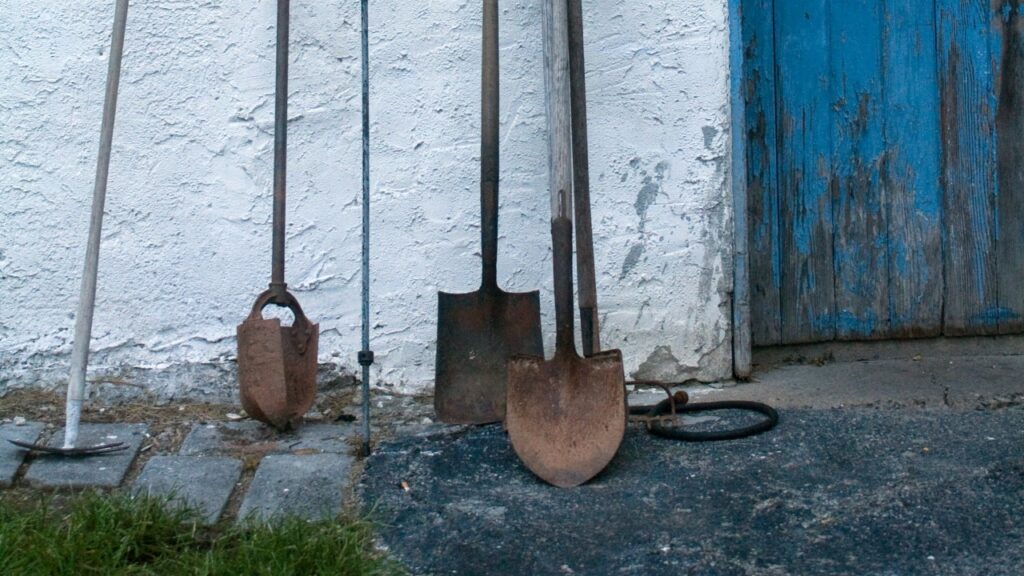Garden spades and border spades are both essential tools for gardening and landscaping, but they serve slightly different purposes and have distinct features. In this comprehensive guide, we will explore the differences between a garden spade and a border spade, including their designs, applications, and when to use each tool. Understanding these distinctions will help you make the right choice for your gardening and landscaping needs.
Garden Spade
A garden spade, often referred to as a digging spade or a round-point spade, is a versatile and widely used tool in gardening and landscaping. It is characterized by the following features:
Blade Shape: The blade of a garden spade has a relatively broad, rounded shape. It resembles a semi-circle with a curved edge. This design allows for effective soil penetration and digging.
Blade Size: Garden spade blades are typically larger than those of border spades. The broader blade offers greater surface area for digging and moving soil.
Blade Material: Garden spade blades are commonly made of steel or other durable materials. The blade is designed to withstand the rigors of digging and lifting heavy soil, making it suitable for more substantial gardening tasks.
Handle: Garden spades typically have long, straight handles with a D-shaped or T-shaped grip at the top. The handles provide leverage and control when digging and moving soil.
Applications of a Garden Spade:
Digging: Garden spades are ideal for digging planting holes for shrubs, trees, and larger plants. The broad blade allows for efficient excavation and removal of soil.
Trenching: Garden spades are excellent for creating trenches for irrigation systems or burying cables and pipes.
Turning Soil: When you need to turn or aerate the soil in a large area, a garden spade is the tool of choice. It’s effective for mixing compost and amendments into the soil.
Lifting and Transferring Soil: Garden spades are suitable for lifting and moving larger quantities of soil, making them useful for transferring soil from one area to another.
Border Spade
A border spade, also known as an edging spade, is a smaller and more specialized tool designed for precise work in confined spaces. It has distinct characteristics that differentiate it from a garden spade:
Blade Shape: The blade of a border spade is narrower and flatter compared to a garden spade. It has a straight, squared-off edge that is well-suited for edging and making clean cuts.
Blade Size: Border spade blades are smaller and more compact, making them appropriate for detailed, controlled tasks.
Blade Material: Like garden spades, border spades also have blades made of durable materials such as steel. However, the focus is on precision rather than heavy-duty digging.
Handle: Border spades often come with shorter handles compared to garden spades. This design provides better control and maneuverability in tight spaces.
Applications of a Border Spade:
Edging: Border spades are specifically designed for creating clean edges along paths, flower beds, and other defined areas. They excel at cutting precise lines in the turf or soil to create well-defined borders.
Planting Small Plants: When planting small perennials, annuals, or bulbs, border spades offer the control needed to create small planting holes.
Weeding: The narrow blade of a border spade is effective for weeding in narrow spaces without disturbing nearby plants.
Dividing Plants: Border spades are useful for dividing and transplanting small to medium-sized plants without damaging their root systems.
Cutting Sod: When you need to cut or remove patches of sod in small or confined areas, a border spade is the right tool for the job.
Key Differences Between Garden Spades and Border Spades
Blade Shape: The most noticeable difference is the shape of the blade. Garden spades have a broad, rounded blade, while border spades have a narrow, straight-edged blade.
Blade Size: Garden spade blades are larger, offering more surface area for digging and moving soil, while border spade blades are smaller and more compact.
Handle Length: Garden spades typically have longer handles, providing greater leverage for digging. Border spades have shorter handles for precise control in tight spaces.
Applications: Garden spades are versatile and suitable for a wide range of tasks, including digging, trenching, turning soil, and lifting soil. Border spades are specialized tools designed for edging, planting small plants, weeding, dividing plants, and cutting sod in confined spaces.
When to Use Each Tool
Use a garden spade when you have larger-scale digging, soil-moving, and trenching tasks. It’s also the right choice for turning soil in larger garden areas and when you need to lift and transfer substantial amounts of soil.
Use a border spade when you require precision and control in smaller, more detailed tasks, such as creating clean edges, planting small plants, weeding in tight spaces, dividing plants, or cutting sod in confined areas.
Conclusion
Garden spades and border spades are both valuable tools in gardening and landscaping, each with its own set of characteristics and applications. The choice between the two depends on the specific task at hand. Understanding the differences between garden spades and border spades will help you make the right selection to meet your gardening and landscaping needs effectively.


